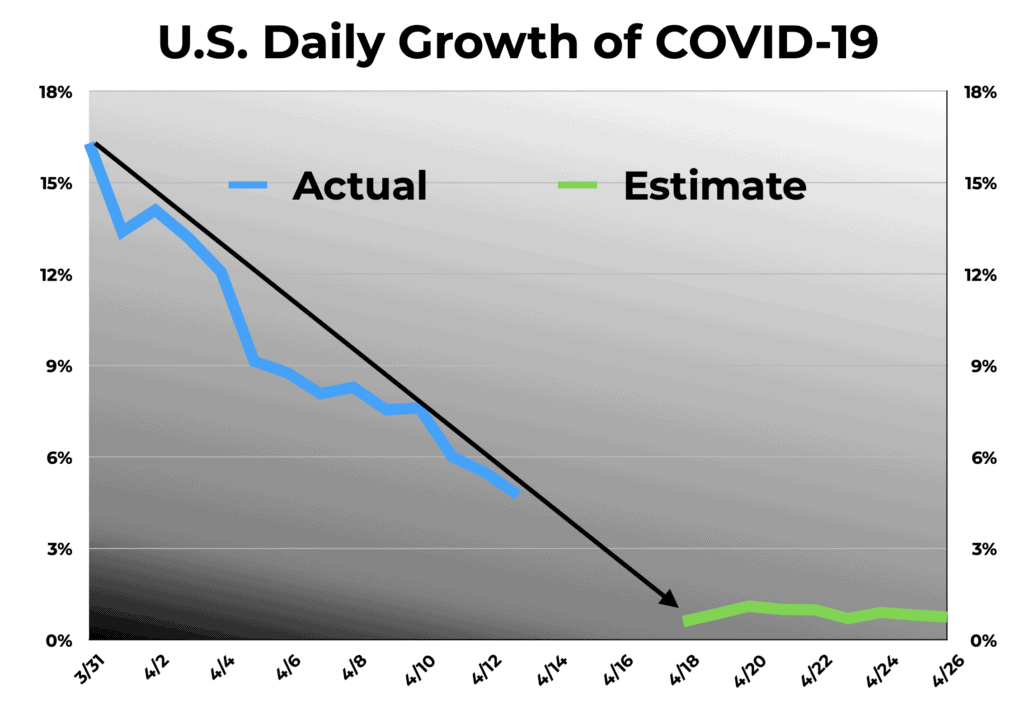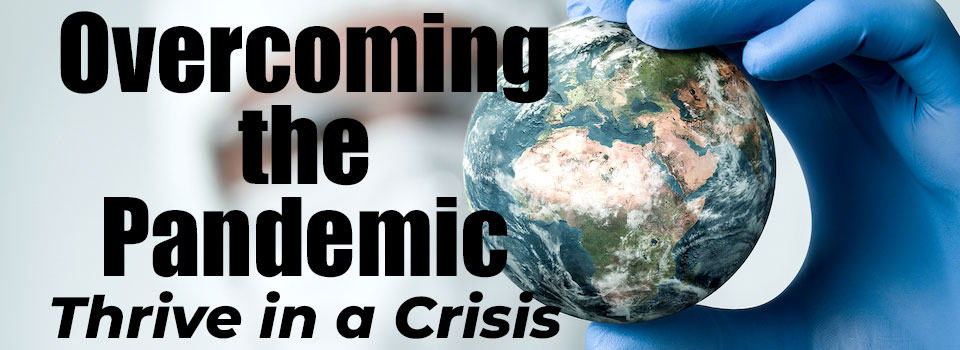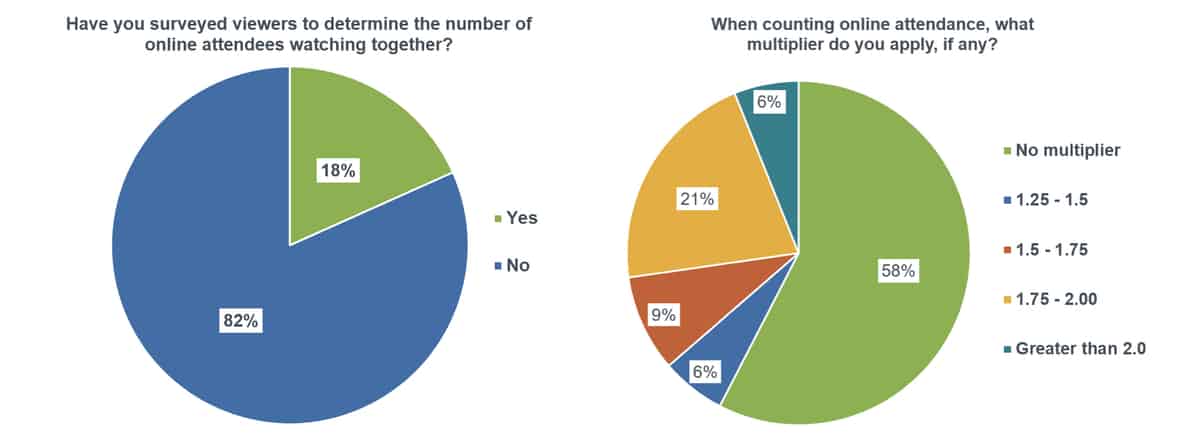The good news is very good. By Sunday, April 19, the daily growth rate of COVID-19 in the United States should be at 1%. This is a sharp decrease from the 76% daily growth rate on March 19. In one month, we have almost won the war!
The bad news is that almost is not enough. We need to continue social distancing and stay-at-home measures. If the United States follows the data path of South Korea, over the next month we will wobble every day between 3,000 and 12,000 new cases of COVID-19. These new cases are the green squiggly line.
The pandemic in the United States will be greatly controlled but not eliminated by Sunday, April 19. Beware of the green squiggly line!
Impact for the Church
The green squiggly line will have great impact on the church. Life as normal may return for many, but not for all. The following are some of the things discussed in the course, Overcoming the Pandemic.
It could be that many Christians will return to their worship centers in May. However, at-risk people should not return at that time. Those most at risk are people with other serious health conditions and those over age 60. Those at risk should wait until the daily rate of infection is below the green squiggly line.
Church leaders should give permission to at-risk people to continue to live-stream. Otherwise, some may see it as a Christian responsibility to come to the facility for worship.
Think of it this way. If a church has 1,000 people in their worship center, the green squiggly line shows there could be one infected person in attendance. To further complicate matters, that person may not show any symptoms.
Being aged 60, I need to return to the church building when the new cases in my county are essentially zero. Otherwise, in a church of 1,000, I may come into contact with an infected person. I plan to return to church when the green squiggly line has been eliminated.

Protocols for a Safe Re-Opening of Church
Churches would do well to have member doctors and nurses on hand, screening worshippers who show any signs of COVID-19. Those signs are shortness of breath, a dry hacking cough and a temperature above normal. Equip those teams with non-contact thermometers.
Ushers and greeters should be trained about the symptoms. They should gently ask people with symptoms to immediately talk with the on-site medical team.
Churches will need to continue to do cleaning before, during and after the services. This cleaning should include counters, door knobs, wood or metallic seat parts and children’s toys. Coffee stations should be closed. Hugs and handshakes should be avoided during the green squiggly line.
Let’s remember that Streaming Sunday began on March 15. That was the day when 60 million American Christians began to worship online and at home. By following stay-at-home orders, millions of Christians helped fight the battle of COVID-19.
We need to take extra care for at-risk people as long as the green squiggly line exists.
For the Technically Minded
Consider that from March 1 to March 23, the Average Daily Growth (ADG) of COVID-19 in the United States was 34%. At that rate, the number of infections doubled every three days. From March 24 to 28, the doubling took about 4 days—a 23% ADG.
From March 29 to April 4, the doubling took 6 days—a 14% ADG. From April 5 to April 11 it went to 8 days—an 8% ADG. For April 12 and 13, the ADG was 5%, with a doubling of cases every 16 days.
The slowing of the ADG fulfills the analysis that I did on March 30 and April 6. I went out on a limb with those articles and gave specific dates. The good news is that those estimates proved to be realistic and accurate.
On April 18, we should enter the area of the green squiggly line. On that day, there will be over 650,000 total cases with 93,000 hospitalizations and 25,300 deaths. It is vital to remember that April 18 is not the peak day of cases. The total number of cases and deaths will continue to increase at a wobbly .3% to 1% during the time of the green squiggly line.
The Green Squiggly Line
How long will we have a daily growth of COVID-19? When will the disease be eradicated? That’s where the green squiggly line enters the discussion.
The United States may well follow the path of COVID-19 eradication in South Korea. That country was at a 1% daily growth rate on March 15. A month later, on April 12, South Korea’s daily growth was down to .3%. Their experience shows that it takes significant time and energy to approach the elimination phase of the pandemic. The green squiggly line is the wobble of daily infections between .3% and 1%.
If the United States follows the data path of South Korea, it will take from April 19 to May 18 to slow the daily growth from 1% to .3%. In that month, the United States will see 216,000 new COVID-19 cases, with 31,000 hospitalizations and 9,300 deaths. On average during the month, there will be 7,200 new cases each day.
This is the problem of the green squiggly line. COVID-19 will continue to adversely impact our communities. Tens of thousands will fall ill, be hospitalized and thousands will die. Some at-risk church members should continue to live-stream. Though the daily growth will slow dramatically from previous peaks, we have church and community challenges ahead.
We are winning the war, but the battle is not over.
Data
COVID-19 data is from the Coronavirus COVID-19 Global Cases by the Center for Systems Science and Engineering (CSSE) at Johns Hopkins University (JHU): https://www.arcgis.com/apps/opsdashboard/index.html#/bda7594740fd40299423467b48e9ecf6
Raw data on the number of cases can be found at: https://github.com/CSSEGISandData/COVID-19/blob/master/csse_covid_19_data/csse_covid_19_time_series/time_series_covid19_confirmed_global.csv
Raw data on mortality can be found at: https://github.com/CSSEGISandData/COVID-19/blob/master/csse_covid_19_data/csse_covid_19_time_series/time_series_covid19_deaths_global.csv




